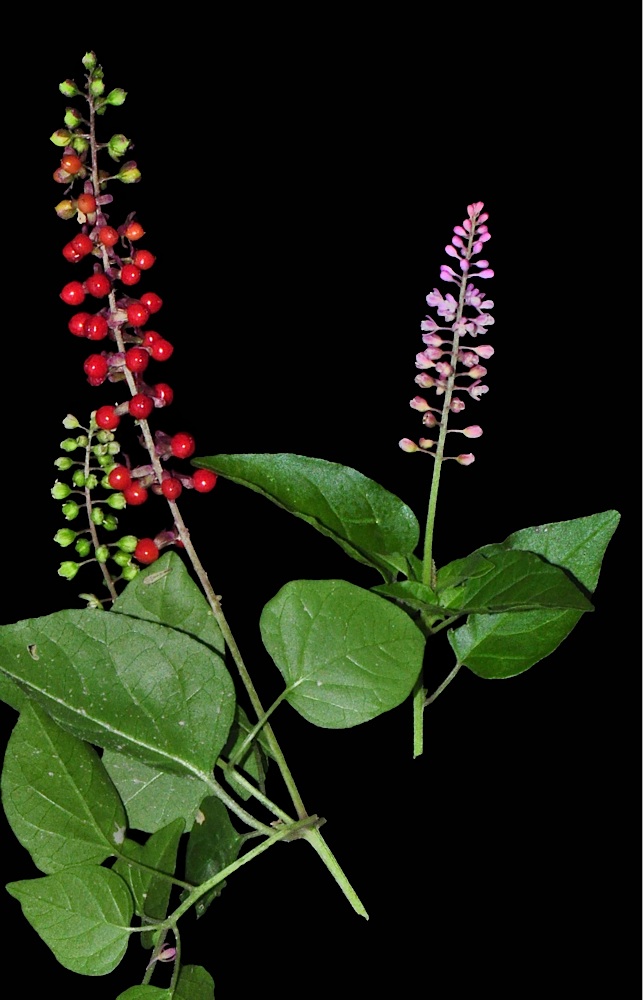|
Family: Phytolaccaceae |
Herbs or subshrubs, perennial, woody at base. Leaves alternate. Inflorescences axillary or terminal racemes, 5-50-flowered. Flowers: sepals 4; stamens 4; carpel 1, ovary 1-loculed; style present; stigma 1, capitate. Fruits berries, red to orange or yellow, subglobose. Seed 1. The fruits of Rivina have been called berries, drupes, or, by those unwilling to commit themselves, simply fruits. The most recent study of fruit morphology and anatomy (D. D. Nautiyal and S. C. Gupta 1984) uses the term 'berry.'
PLANT: Perennial herbs, sometimes suffrutescent, 0.1-1 m high, puberulent. STEMS: slender. LEAVES: petiolate, 3-11 cm long, deltoid to ovate, the apices acute to acuminate. INFLORESCENCE: terminal or axillary, 3-15 cm long. FLOWERS: white to pink, bracteate; calyx deeply 4-lobed, 2.0-3.5 mm long; stamens 4, distinct and alternating with the sepals; pistil 1-ovuled. FRUITS: druplets. SEEDS: black, lens-shaped. NOTES: A monotypic New World genus distributed in both hemispheres and naturalized in the Old World. (for A.Q. Rivinus, a German Botanist, 1652-1723). REFERENCES: Steinmann, Victor. 2001. Phytolaccaceae. J. Ariz. - Nev. Acad. Sci. Volume 33(1). |


